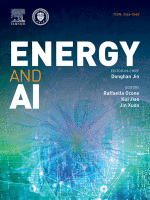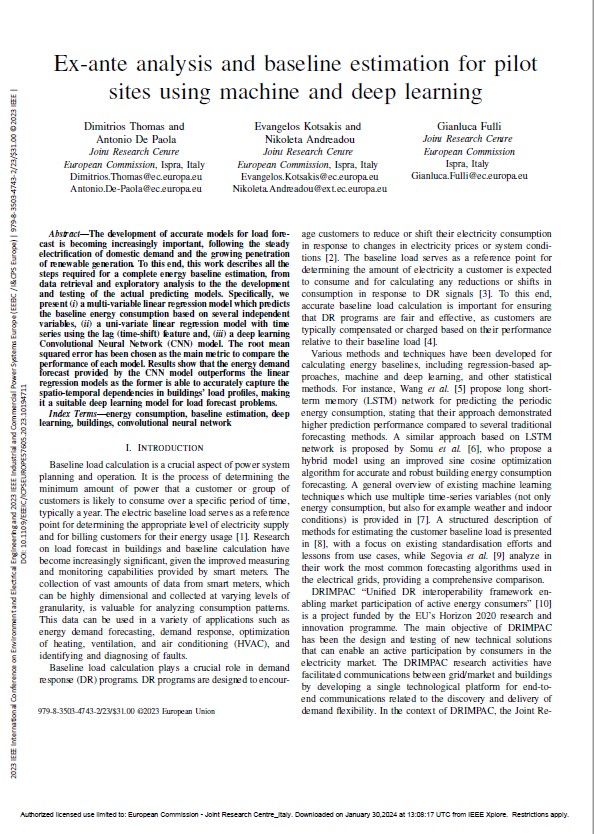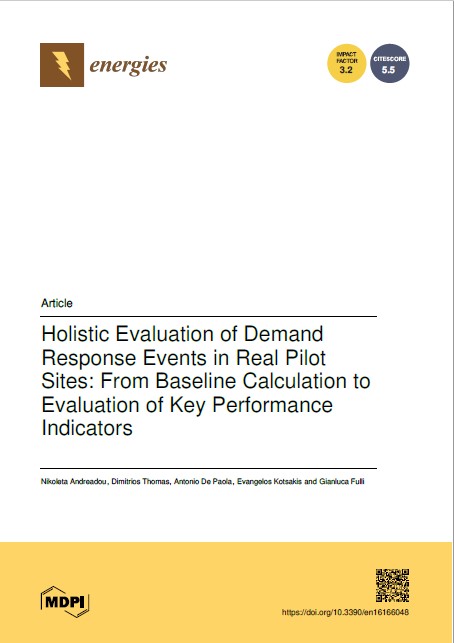Background and context
AI has become increasingly integrated into the energy sector to address various challenges and optimize operations. The background and context of AI use in the energy sector stem from the need to enhance efficiency, reduce costs, and develop sustainable energy solutions. AI technologies are utilized for predictive maintenance, fault detection, and energy demand forecasting to improve the performance and reliability of energy infrastructure. Furthermore, AI is crucial for optimising energy production and distribution, enabling utilities to better manage supply and demand, integrate renewable energy sources, and reduce environmental impact. As the energy sector continues to evolve, there is a growing need for AI solutions to support grid modernisation, energy storage, smart grid management, and cybersecurity to ensure the stability and resilience of energy systems.
Our role
We assess the AI and the energy sector interdependencies, developing models for governing the evolving power system dynamics and operations. More in detail we:
- adopted machine learning and deep learning techniques to estimate energy baseline; we also developed models for electricity load forecast.
- used neural networks to predict performance and trends of renewable generation and self-consumption at the distribution level.
Furthermore, we started:
- evaluating the use of machine learning tools in order to detect quality issues and anomalies of energy trade data. Furthermore those tools will be applied to investigate trade data with the goal to increase the transparency and integrity of energy markets.
- applying AI tools (neural network models), to automate the operation of EV charging facilities. These will be able to autonomously identify the types and features of the connected EV fleet and perform a dynamic, optimised management of the charging process, allowing to provide ancillary services to the grid and support its safe and efficient operation, with minimum impact of the customers’ comfort.
- collaborating with private and public entities operating in the AI sector, such as the IT company fabbricadigitale and TU Delft AI Energy Lab, to develop socio-technical models of the energy systems, with special focus on local energy communities and smart electricity systems.
Main publications

2025 - Machine learning identification of Electric Vehicles from charging session data
This article implements a novel machine-learning approach to estimate relevant information on AC charging vehicles in a real-world experimental setting designed and implemented by the authors. The proposed approach does not require any hardware adjustment and is capable of predicting several features of the connected EVs (e.g., brand, model, year, battery capacity, End-of-Charge status) by exclusively considering their charging profile in response to specific prescribed current setpoints. Possible applications of the model range from the design of smart charging facilities capable of identifying regular users and forecasting their charging patterns to the real-time estimation of the aggregate flexibility of connected EVs, an essential component in vehicle-to-grid (V2G) applications. Extensive practical demonstrations based on experimental data are provided to validate the identification procedure.

2023 - Ex-ante analysis and baseline estimation for pilot sites using machine and deep learning
The development of accurate models for load forecast is becoming increasingly important, following the steady electrification of domestic demand and the growing penetration of renewable generation. To this end, this work describes all the steps required for a complete energy baseline estimation, from data retrieval and exploratory analysis to the the development and testing of the actual predicting models. Specifically, we present (i) a multi-variable linear regression model which predicts the baseline energy consumption based on several independent variables, (ii) a uni-variate linear regression model with time series using the lag (time-shift) feature and, (iii) a deep learning Convolutional Neural Network (CNN) model. The root mean squared error has been chosen as the main metric to compare the performance of each model. Results show that the energy demand forecast provided by the CNN model outperforms the linear regression models as the former is able to accurately capture the spatio-temporal dependencies in buildings' load profiles, making it a suitable deep learning model for load forecast problems.

2023 - Holistic Evaluation of Demand Response Events in Real Pilot Sites: From Baseline Calculation to Evaluation of Key Performance Indicators
Explicit demand response plays a significant role in the future energy grid transition, as it involves end consumers in smart grid activities and, at the same time, exploits the potential of flexibility, giving the opportunity to grid operators to accommodate a total amount of energy without the need to reinforce the grid infrastructure. For evaluating the successfulness of a demand response program, thus, evaluating its advantages, it is fundamental to have an accurate baseline curve consumption along with meaningful key performance indicators. In this work, we propose a novel way of calculating the baseline consumption using artificial intelligence techniques. In particular, regression models have been applied to a database of historical data. In order to present a complete evaluation of demand response programs, we present five key performance indicators (KPIs). The KPIs have been selected so as to depict the successfulness of the explicit demand response program. We suggest a novel way of evaluating two of the five KPI using a quantitative approach. We also apply the proposed methodology for baseline calculation and KPIs evaluation in a practical example: two pilot sites have been used and real-life scenarios of demand response events have been applied for this scope to actual nonindustrial consumers and especially residential consumers. The baseline has been calculated for these pilot sites and the KPIs have been evaluated for them. The presented results complete the picture of evaluating a real-life demand response program and show the effectiveness of the selected approach. The proposed schemes for baseline calculation and KPI evaluation can be used by the scientific community for evaluating future demand response programs, especially in the residential sector.
